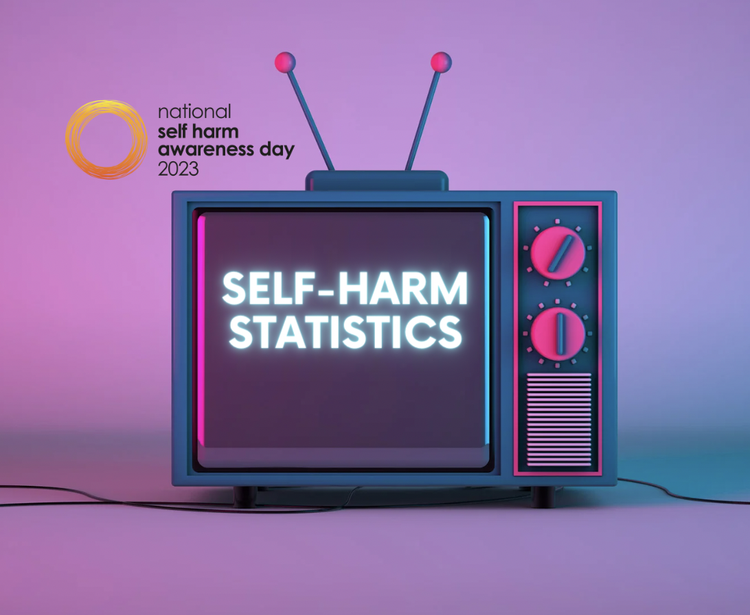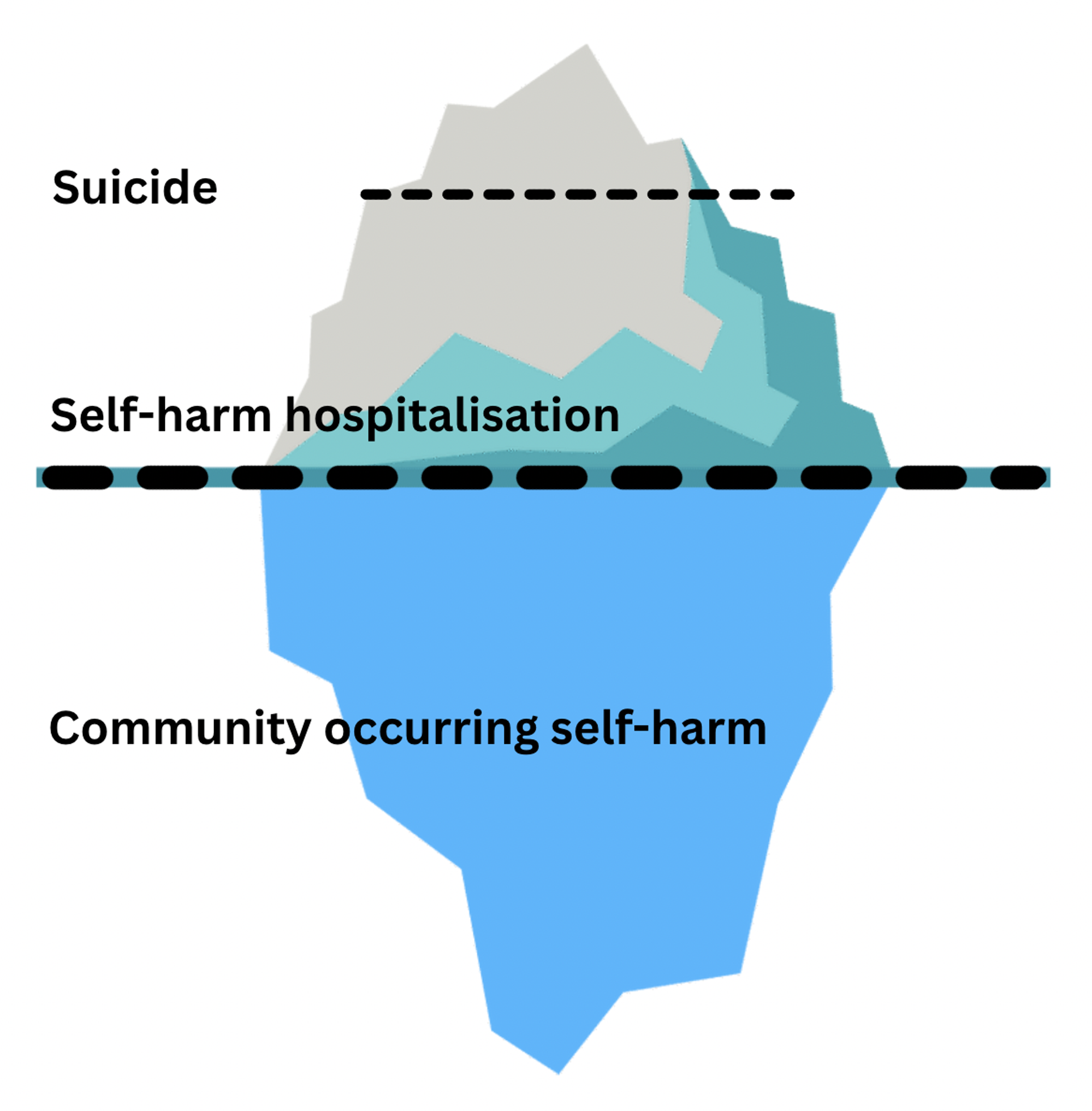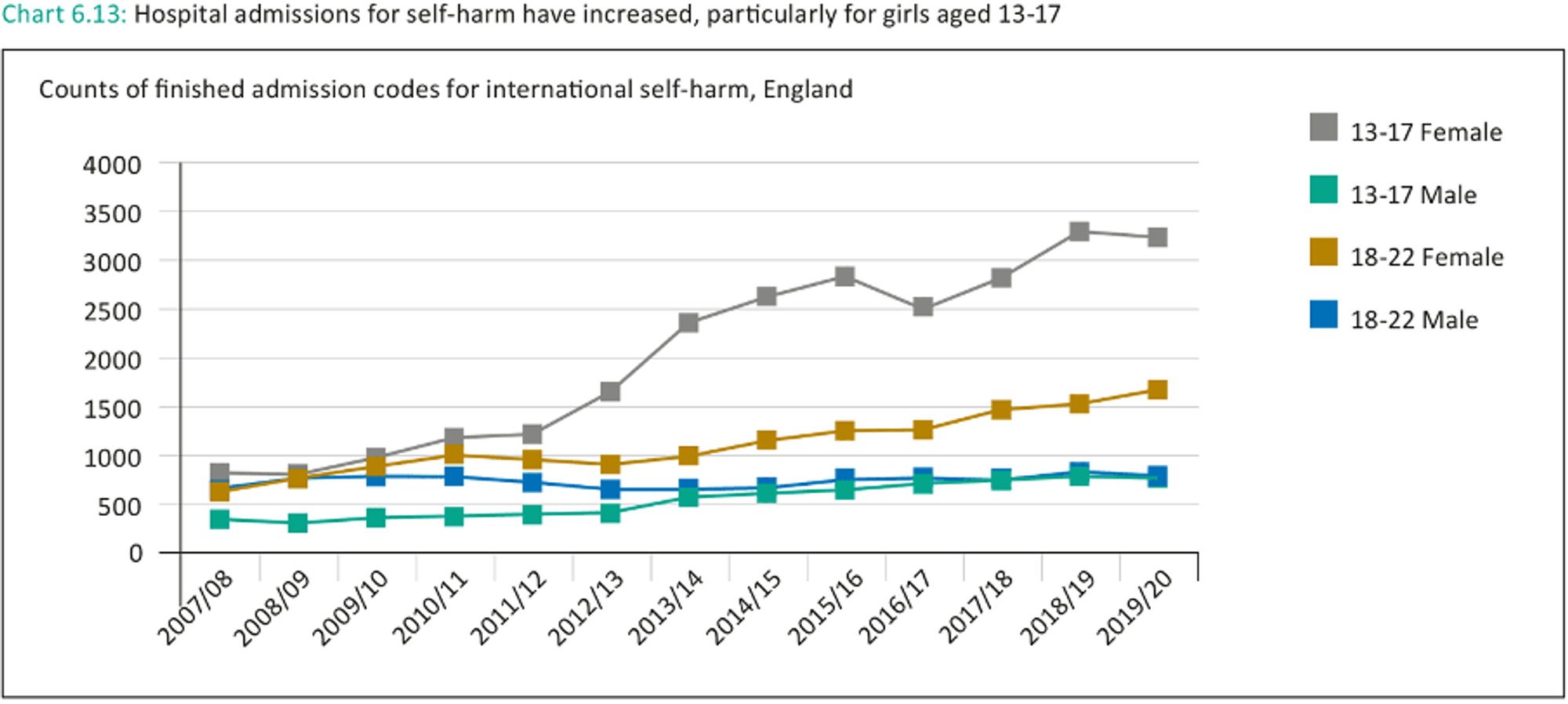Self-harm statistics

Self-harm statistics are hard to measure because they depend on people coming forward and allowing themselves to be counted. But here's what we do know....

How many people self-harm?
The ‘Iceberg Model of Self-Harm’ highlights that self-harm data can be measured in 3 places and that the majority of data remains (as with icebergs) below the water, so cannot be fully measured.
This means we know that the data we have isn’t the full picture – but that doesn’t mean that we don’t have an idea of the scale of this struggle for young people. Data can give us an idea of current self-harm rates and community levels through estimation.
Hospitalisation data on self-harm in young people, highlights that the 15–19-year-old age bracket have increasingly higher cases of hospitalisation in England since 2012 to a rate of nearly 650 per 100,000 in 2018 compared to other subgroups[1].
Meanwhile, 10–14-year-olds sit significantly lower than other age groups, with around 210 cases of hospitalisation per 100,000 in 2018. Furthermore, the graph below demonstrates counts of specific admission codes for intentional self-harm and highlights a similar increase specifically for 13–17-year-old females, approximately doubling from 2012 to 2020[2].

So, how many young people self-harm?
As the Iceberg Model highlighted, community data is likely to be an estimate of a wider and more prevalent number of young people who are struggling with self-harm AND this will be potentially 10-times larger than the hospitalisation statistics shown above.
Data from England in 2015, demonstrated 6% of 12-17-year-olds in their community sample report self-harming in some form in the past year1.
Meanwhile, research from 2018 suggests around 1 in 6 young people will have self-harmed by the time they are 18[3]; that 3% of 11-16 year olds without mental health diagnoses report self-harm at some point compared to around 25% of those who do have a diagnoses.
As well as this, nearly 47% of 17-19-year-olds struggling with mental health difficulties have self-harmed at some point[4].
More recently, research from Childhood Trust reports that just under 6% of their sample of parents claim their under-18 has started self-harming following concerns and stress during the cost of living crisis[5].
Also, data from Scotland found 16% of under 24s had self-harmed at some point[6]. This seems specifically driven by increases in female rates of self-harm, like hospitalisation data, as demonstrated in the graph below, which highlights increased rates of self-harm in a cohort as the grew from age 14 to 17, but also higher rates for females overall[7].
[1] Association for Young People’s Health Key Data (2019), Public Health England Fingertips: Hospital Episode Statistics.
[2] Association for Young People’s Health Youth Health Data (2021)
(Taken from Hospital Episode Statistics, NHS Digital 2020)
[3] Association for Young People’s Health Youth Health Data (2021)
(Taken from Gillies et al., 2018).
[4] NHS Digital (2018), Mental Health of Children and Young People in England, 2017
[5] Ambrose (2022) Guardian Article -(Taken from Childhood Trust research)
[6] Samaritans Scotland (2020) (Taken from Scottish Government Scottish Health Survey, 2019).
[7] Patalay & Fitzsimmons (2020)


